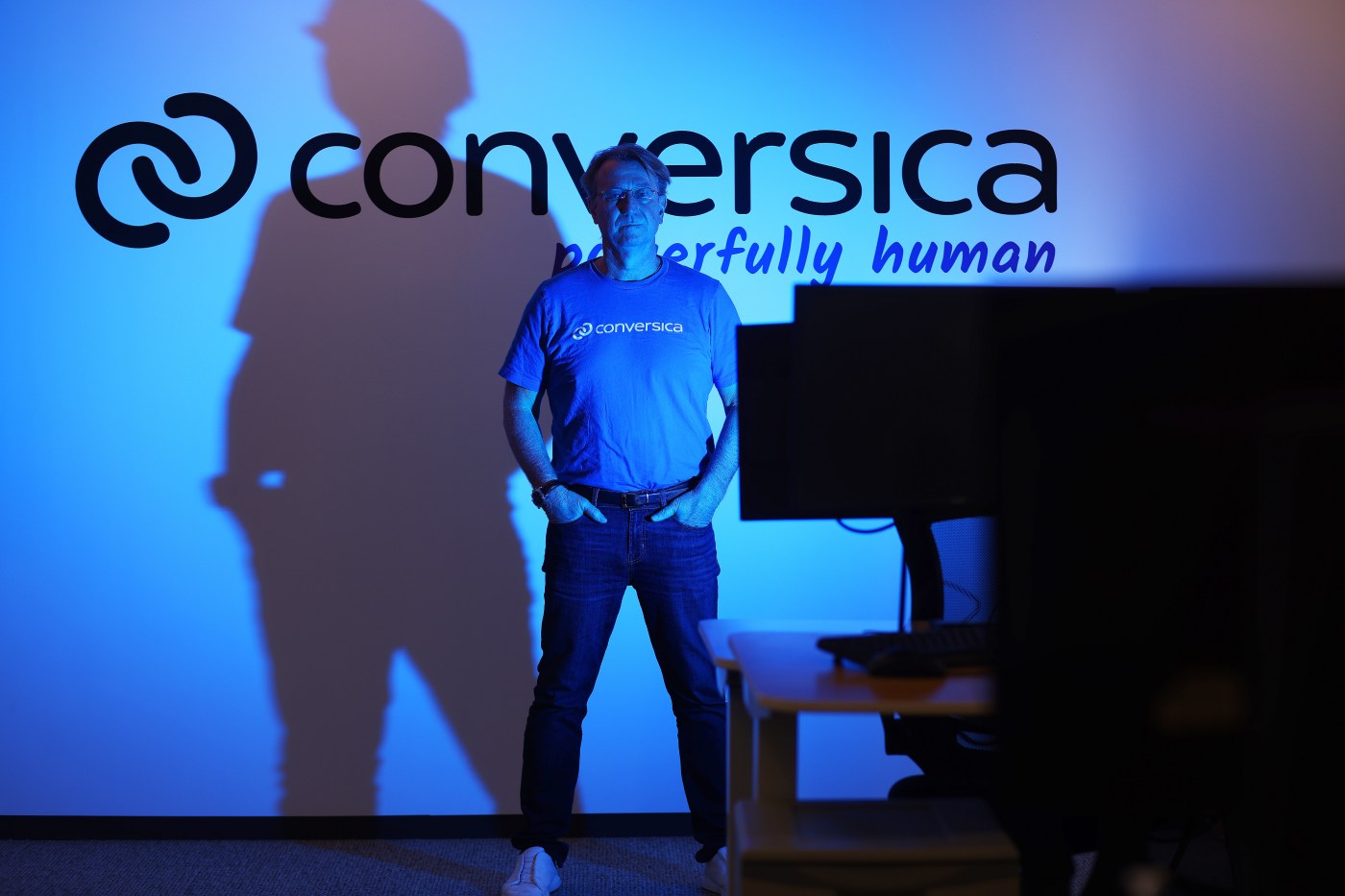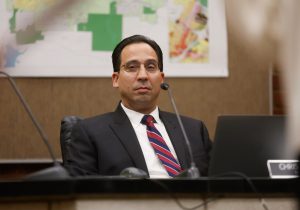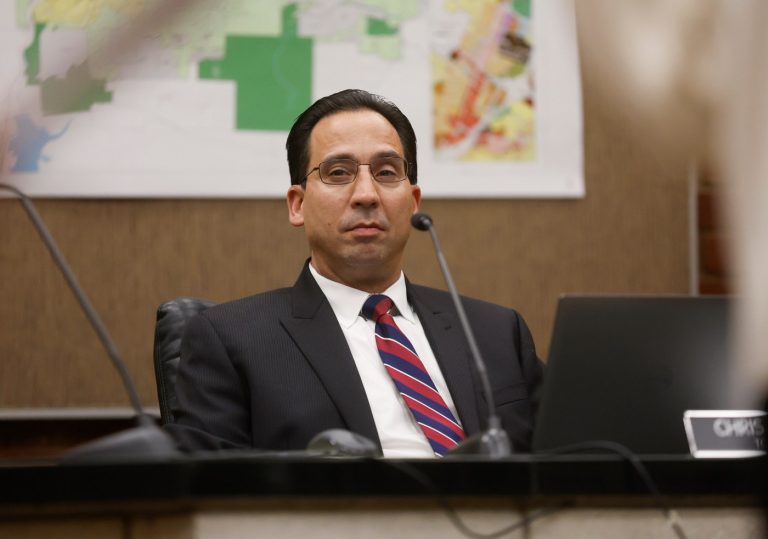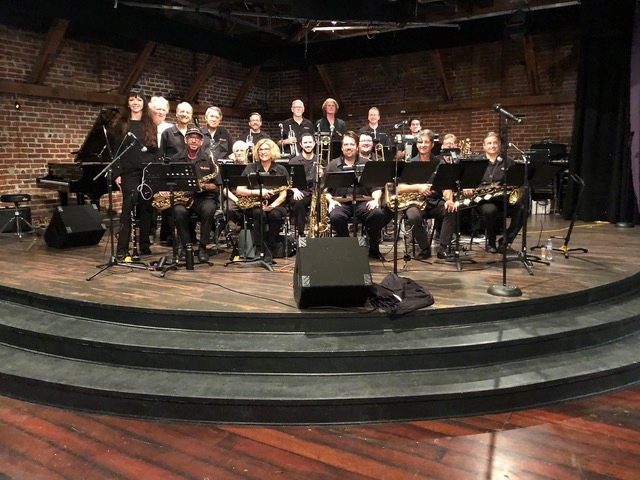The Bay Area is the hotbed for one of, if not the fastest growing industries sweeping the globe: artificial intelligence.
Research from International Data Corp. predicts AI will contribute nearly $20 trillion to the global economy by the end of the decade, constituting 3.5% of global GDP.
Federal, state and local governments — including the city of San Jose, which founded the GovAI Coalition in 2023 — have also adapted and looked at ways that AI can make services better and more efficient.
Within the same time period, multiple industry reports predict the conversational AI market will increase by at least 20% per year from its current estimated market size of $11.6 billion.
Conversational AI products have already gained a major foothold in everyday society from Apple’s Siri to chatbots to virtual personal assistants.
Conversica CEO Jim Kaskade on Monday, Jan. 13, 2025, in San Mateo, Calif. Conversica is an AI company that uses the technology for marketing and sales. (Aric Crabb/Bay Area News Group)
Conversica — headquartered in San Mateo — has become a pioneer and leading force in the conversational AI market through software and virtual assistants that interact though chat, email and SMS.
The company that would later be branded Conversica began in 2007 and launched its first AI product in 2009. Since then, it has expanded from a niche product in automotive sales lead generation to offering solutions to the business and financial services, higher education, insurance, manufacturing, retail, entertainment, technology and telecom industries, including attracting Fortune 50 clients and professional sports teams.
Its AI revenue agents are now within two orders of magnitude of the cognitive power of the human brain.
Conversica CEO Jim Kaskade, who joined the company in 2019 and helped shift its market strategies from small business to major, multinational companies, discusses the current state of AI and where it could quickly go from here.
Q: What would you say are some of the limitations of AI right now?
A: “If you’ve played with and most people have played with ChatGPT, what you find is that it hallucinates or confabulates. If you do benchmarks and you kind of compare it across models, you might be able to generalize that the transformer hallucinates about 15% of the time, so it’s 85% accurate, but that’s in the context of one query or one question. What you have to think about is if I have a 10-step or 20-step process in trying to sell something to somebody, or just any sort of complex workflow, the error compounds. You’ve heard the story where you can just have a story and tell it to 10 friends, and then the 10th person kind of tells the original story and it’s completely different from the first.”
Q: How has Conversica adapted to those limitations?
A: “We, in very simple terms, can give Skynet or the Terminator certain control, right? And if you give it control over everything, then you’re going to have an issue so you have to be very, very strategic in what you allow it to control. The first thing it’s really good at is language, speaking, comprising great paragraphs and letters and content, so let it speak. Use it for natural language generation but don’t give it any more control over that. Step two is, if you’re good, you can figure out how to use it to understand people. Natural language understanding is a little bit more risky, because if it understands you incorrectly, then it might take the wrong action. The third thing, which we will never apply the transformer to, at least not in my current appreciation for the accuracy, is give it control over the actions. You’ll see some releases from OpenAI on giving it direct access to be able to take control and take action so stay tuned. But I wouldn’t want it to turn on or turn off my drug pump at the hospital, administrating my level of dosage for health care if it’s going to be 15% inaccurate. Sorry, that’s not going to happen and I’m not going to let it land my plane if it’s only going to be 85% accurate.”
Q: What do you mean by the technology being two orders of magnitude away from the cognitive power of the human brain?
A: With GPT-4, we’re at 1 trillion parameters and a terabyte of training data so that’s the current art. Now, why do I say we’re two orders of magnitude away from greatness, meaning the kind of level of a human brain? Because, how many synapses does a typical human brain have? It has 100 trillion synapses and how much can your brain store? About two and a half petabytes, which is similar in kind of magnitude of increased knowledge.
Q: With the current technology two magnitudes away from the human brain, how quickly could it evolve?
A: Well, you heard maybe Sam Altman, the CEO of OpenAI, say that 2025 could be the year in which you know the technology actually allows or enables us to achieve this artificial general intelligence, which is just a fancy term for we’re getting pretty close to the capacity of the human brain. Either that’s exciting or that’s scary, depending on whether you’re a fan of the Terminator and watch what happened with Skynet, right?
Q: The public sector has begun to take a harder look at ways to improve government through AI. What sort of applications could you see AI applied by the government?
A: “I think like public administration automating repetitive tasks — whether it’s data entry or form processing or document management — those are all low hanging fruits in the chatbot kind of agent era. Answering any sort of citizen queries or guiding users through applications and providing updates and public Services are all absolutely perfect use cases for this. You could even get into application of AI and fraud detection, identifying irregularities and tax filings or Social Security benefit claims and things like that so there’s not one area that can’t be considered. I think analyzing historic crime data could be done at scale, across precincts, across regions to look for similarities and identify high risk areas in times of need for deploying resources more effectively.”
JIM KASKADE PROFILE
Position: Conversica CEO
Education: Masters of Business Administration, University of San Diego, Bachelors of Science in Electrical Engineering and Computer Science, University of California, Santa Barbara
5 things to know about Jim Kaskade
The biggest wave he ever surfed was in 1990 during a big storm in Costa Rica at a place called Pavones, home of one of the longest left-handed waves in the world.
His family searches for the most remote places to ski and includes Burnt Mountain Glades at Snowmass, Co. and Jackson Hole at Corbet’s Couloir among his favorite places in the U.S.
Favorite backpacking story took place in the Baliem Valley in Western New Guinea where Kaskade almost died while trying to hike over five mountain ranges with a local Dani guide and porter.
Loves traveling to Indonesia and has traveled to every major island except Timor.
One of five engineers who invented and built what is known as the BYNET, which scaled the Teradata database to the largest data warehouse solution that exists. It’s how he became passionate about data and analytics.












